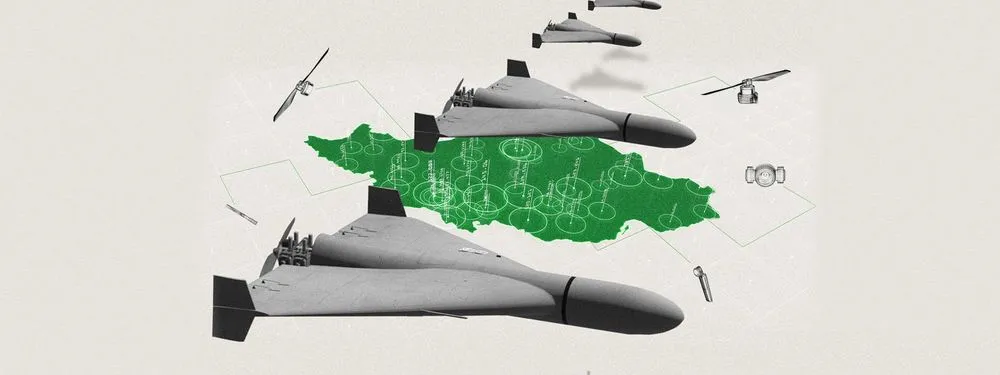Production and Proliferation: The Risks of the Burgeoning Iranian Drone Industry

The physical threat of Iranian-made unmanned aerial vehicles (UAVs), commonly known as drones, has been evident in conflict zones over Israel, the Red Sea, and Ukraine. Iran’s burgeoning drone industry also poses significant challenges to global businesses and Western governments. Insikt Group identifies five primary risks: compliance violations due to illicit procurement networks, reputational harm from the use of Western components in drones, technology transfer through reverse engineering, global proliferation of drone technology, and heightened cybersecurity threats. Despite international sanctions, Iran’s drone production and export have expanded, involving partnerships with countries like Russia.
A Global Security Threat
Iranian UAVs have proliferated as a global security threat over the past year. In April 2024, Tehran launched an unprecedented direct attack on Israel involving the launch of 170 drones, and by the start of 2024, Russia had reportedly launched over 3,700 Iranian-made Shahed drones to devastating effect on the front lines in Ukraine. Iran and its proxies have used these unmanned aircraft across the Middle East, including targeting United States military bases in the region, striking critical infrastructure in Saudi Arabia and the United Arab Emirates, and attacking Western naval ships and international commercial vessels from the Red Sea to the Persian Gulf. The broad use of Iranian drones across regional conflicts almost certainly reflects the strategic prioritization — at the highest levels of the Iranian government — of developing, producing, and proliferating these systems.
Compliance and Reputational Risks
Iran’s production of drones relies heavily on an evolving global network to procure foreign-made components. This network exposes Western defense and manufacturing companies to compliance violations and reputational harm. By acquiring components through illicit means, Iran circumvents international sanctions and integrates Western technology into its drones. Businesses must therefore maintain robust compliance programs and stay vigilant about the red flags associated with Iranian procurement tactics.
Technology Transfer and Cybersecurity Risks
Iran’s ability to domestically reproduce foreign technology poses a significant threat. By reverse-engineering Western components, Iran undermines the effectiveness of export controls and sanctions. Moreover, Iranian cyber-espionage capabilities present an ongoing threat to Western defense contractors. Iranian APT groups are likely targeting companies involved in aerospace and drone technology to advance their own capabilities.
Global Proliferation of Iranian Drones
The global expansion of Iranian drone exports and production is particularly concerning. Iran’s partnerships, notably with Russia, enhance the capabilities of both countries’ drone programs. Iran's drones have been used in conflicts across European, African, and South American theaters, demonstrating their strategic importance. Most notably, the collaboration between Iran and Russia in drone production has significantly boosted Moscow’s ability to destroy critical infrastructure in Ukraine.
Mitigation Strategies for Businesses and Governments
To counter these threats, businesses should implement comprehensive compliance programs, educate employees on illicit procurement practices, and strengthen cybersecurity measures. Governments must enhance their analytical resources to identify and target entities supporting Iran’s drone industry. International collaboration and consistent enforcement of export controls are crucial to mitigating the proliferation and development of Iranian drones.
To read the entire analysis, click here to download the report as a PDF.
Related News & Research
